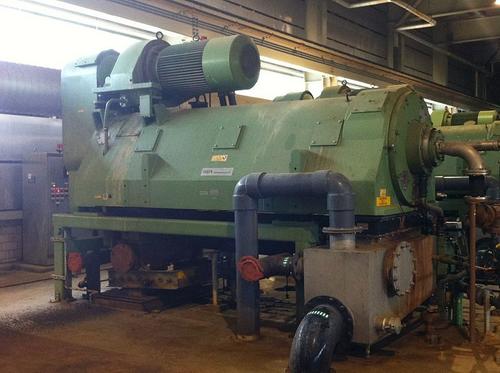Aerobic stabilisation
Aerobic stabilization of primary and secondary sludge can be carried out in an aeration tank. Because of the high oxygen requirement, this process is energy intensive and costs are high. Aerobic stabilization requires less energy when carried out as part of a composting process. Composting is an aerobic bacterial decomposition process to stabilize organic wastes and produce humus (compost). Compost contains nutrients and organic carbon which are excellent soil conditioners. The optimum conditions for composting are a moisture content of about 50 %, a carbon to nitrogen ratio of about 25 to 30, and temperature of 55 °C.
Composting can be carried out in a specially built composter, such as an inclined rotating cylinder, fed on one end with the raw materials, and the aerated product collected at the other end. As the materials are slowly tumbled over a period of about one week, they are mixed and aerated. Because bacterial decomposition produces heat, temperatures in the insulated composter can easily reach 55 °C. The immature compost is windrowed for at least 12 weeks to allow the composting process to complete, with occasional turning of the windrow.
(UNEP 2000)

